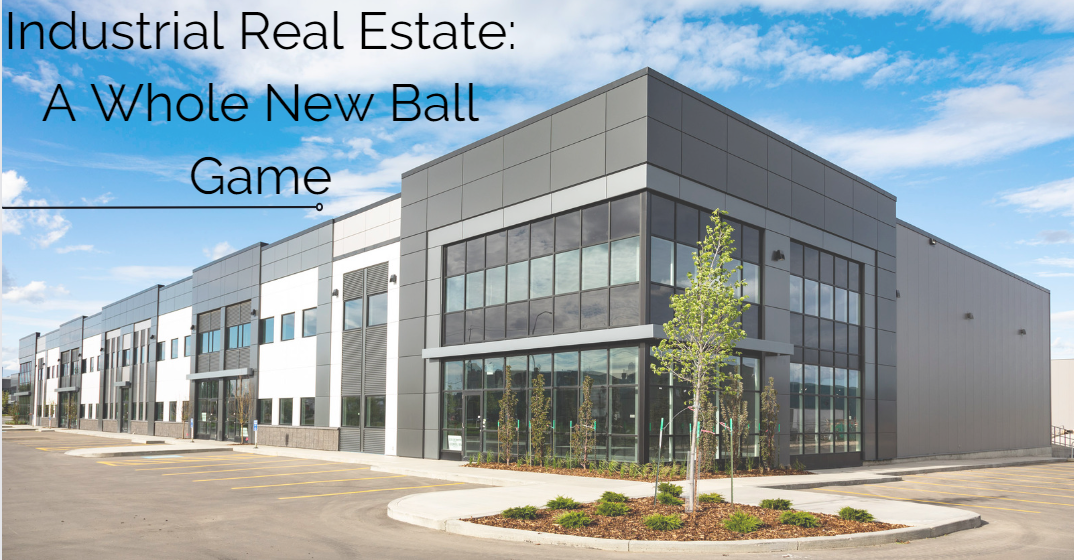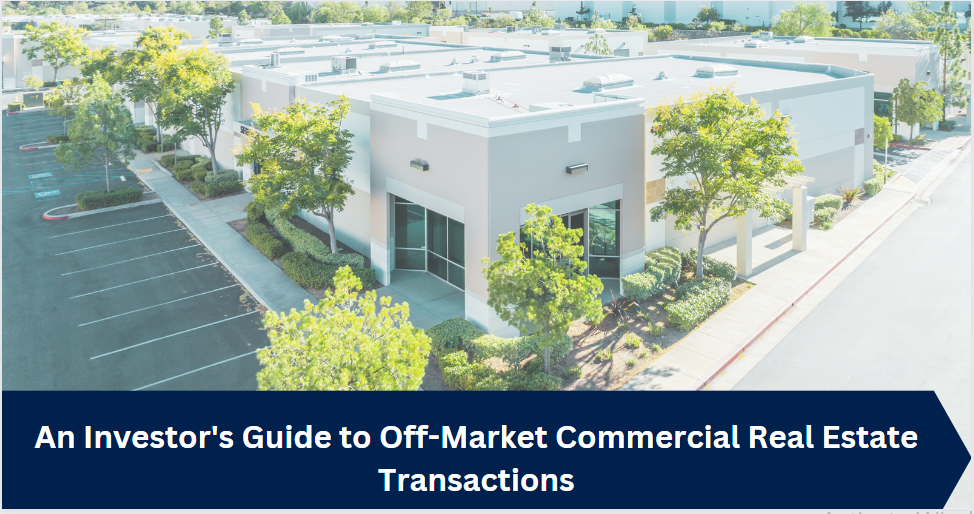The landscape of real estate asset management has undergone a tremendous shift, with digital advancements at its core. The integration of modern tools and data interpretation has equipped professionals to streamline workflows, bolster decisions, and refine portfolio results. This post delves into the profound influence of technology in real estate asset management by spotlighting its transformative impact.
Harnessing Insights from Data:
The impact of technology in the real estate sector lies in its capability to swiftly access and process extensive data. Platforms and software tools today offer instantaneous access to market metrics, performance indices of properties, demographic changes, and more. Such an analytical perspective fosters better decision-making, reveals potential alternatives, and reduces possible hazards/risks.
Evaluating Portfolio Metrics:
The digital age has ushered in a new era of assessing and overseeing real estate compilations. Cutting-edge data interpretation tools grant asset managers the capacity to gauge the success of specific properties as well as entire portfolios. Through monitoring crucial metrics, engaging in hypothetical analyses, and comparing asset metrics with set standards, managers can refine portfolio distribution, spot lagging assets, and chart out value enhancement methods and strategies.
Digital Reconnaissance and Preliminary Analysis:
The traditional methods of manual market surveys and groundwork have seen a digital transformation. Asset managers, backed by Geographic Information Systems (GIS), demographic intel, and property databases, can forecast market potentials, anticipate demand-supply interplay, and discern early market patterns that influence investment strategies. This depth in preliminary analysis enhances the probability of successful investments.
Instantaneous Data Relay and Interactions:
The tech realm ensures immediate data dissemination and interactions, keeping asset managers aligned with portfolio indices and facilitating clear-cut communication with stakeholders. Solutions like cloud services and mobile apps provide on-the-go access to pivotal data, fiscal summaries, and performance visuals, improving trust and cooperative efforts among asset managers, investors, and other key players.
Guarding Against Uncertainties:
Risk management is the cornerstone of real estate asset management. Digital tools offer advanced mechanisms to pinpoint, evaluate, and counterbalance potential perils linked to real estate ventures. Be it market fluctuations, liquidity challenges, or operational glitches, managers can harness analytical tools and simulations to grasp possible weak points and strategize protective measures.
Elevating Property Stewardship and Occupant Interactions:
For those centered around rental assets, digital tools have revamped both property oversight and tenant liaisons. Software solutions simplify lease tasks, rent accruals, upkeep logs, and supplier liaisons. Add to that, advanced building tech and occupant interfaces augment dialogues with renters, elevating the tenant journey and increasing the likelihood of their long-term satisfaction.
The Rise of PropTech:
The advent of PropTech, an amalgamation of property and technology, has redefined real estate asset management. This realm covers innovations like VR walkthroughs, blockchain contracts, crowdfunded real estate ventures, and automated valuation blueprints. Such breakthroughs unlock new horizons for asset managers, paving the way for diverse investment methods and new asset categories.
Incorporating ESG Principles:
The ESG framework is rapidly becoming a focal point in real estate ventures. Digital tools underpin ESG adoption by offering metrics to evaluate the ecological and societal repercussions of properties. Analyzing ESG components aids managers in scrutinizing sustainability metrics, energy conservation, and the ethical dimensions of their collections, ensuring investments are both profitable and principled.
Final Thoughts:
Technology is undeniably the linchpin in modern real estate asset management, reshaping investment scrutinization, oversight, and tracking. From leveraging data to portfolio evaluation, digital advancements are the pulse of the industry's transformation. As tech increasingly dominates, it's imperative for managers to be forward-thinking, incorporating fresh solutions to stay ahead, refine asset results, and navigate the intricate real estate ecosystem. Leveraging technology's myriad offerings will undeniably be pivotal in optimizing the probability of success in real estate asset management.
Industrial Real Estate: A Whole New Ball Game
Remember the days when warehouses were just... warehouses? A lot's changed since then. Over the years, the way we look at industrial spaces has undergone a massive makeover, thanks to tech booms, our ever-growing online shopping patterns, and a world that's increasingly eco-conscious. Let's dive into what's been shaking things up.
The Online Shopping Frenzy:
Raise your hand if you've ordered something online in the past week. Yep, thought so. Our collective love of online shopping is like that massive tidal wave in disaster movies—powerful and unstoppable. Developers noticed and had to scramble. Now, instead of old-school storage spaces, there are supercharged distribution hubs, packed with cutting-edge tech, ready to get our latest splurge to our doorstep ASAP.
Tech: Not Just For The Nerds:
Just a few years ago, robots and AI were sci-fi movie stuff. Now, they're at the heart of modern industrial real estate. Those massive structures aren't just storing products; they're buzzing with drones, AI-driven systems, and self-driving vehicles. If developers aren't tech-savvy these days, they're missing the boat.
Being Green Isn't Just for Kermit:
Our planet's health is on everyone's minds, particularly as we experience increasingly frequent severe weather events and prolonged heat waves across the world. So, industrial buildings aren't just 'buildings' anymore. They've got solar panels, wind turbines, and even gardens on rooftops. Developers have truly taken the "reduce, reuse, recycle" mantra to heart.
Big City Life and The Space Crunch:
Have you ever tried finding a parking spot downtown during rush hour? It's the same with finding space for new warehouses. Developers are getting crafty, thinking vertically, and literally taking things to the next level with multi-story warehouses. It's about making the most of what we've got.
Keeping Things Flexible:
In an ever-changing world, adaptability is the name of the game. Industrial spaces now have the flexibility of a yoga instructor. Need to reconfigure space for a new product line or fancy tech? No worries. Modern designs are all about bending and flexing to meet business needs.
Location, Location... Talent?
Back in the day, you built where land was cheap. Now? It's all about being close to where the talent hangs out. Developers are eyeing spots near universities and training hubs. After all, a business is only as good as its people.
Strong and Sturdy.
COVID-19, among other events, was a wake-up call. Developers are now all about strengthening those supply chains and redundancy. Think of it as having a backup plan for your backup plan. It's all about ensuring businesses can weather any storm.
Conclusion:
Industrial real estate? It's not what it used to be. Whether it's tech, green initiatives, or the sheer need to adapt and overcome, this space is evolving at breakneck speed. Consequently, industrial developers need to learn, adapt, and look forward to what the future holds. Here's to creating spaces that aren't just functional but are also a nod to the future we all envision.
Building Wealth Through Commercial Real Estate Investment
Investing in real estate is a practical route to establish consistent tax-advantaged passive income and equity growth, leading to enduring wealth.
Despite the potential profits of owning rental real estate, getting started can be daunting for many. Here are four fundamental considerations to kickstart your journey in real estate investment.
Understand Your Investment Goals
Most real estate investors share a common objective: to make money. We seek to establish stable tax-advantaged income streams and equity growth, hoping to enjoy additional perks such as diversification, multiple income sources, inflation hedging, and more.
With clear goals, the next step is to trace back the route. How do you navigate from your current position to your financial goals? This journey requires introspection and self-assessment. It's crucial to decide whether you wish to invest actively or passively.
Active Real Estate Investing vs Passive Real Estate Investing
Active investors are hands-on and might engage in asset or property management or both. They're deeply involved in the venture, bringing in-depth real estate knowledge that contributes to success. They devise and implement business plans for rent growth and appreciation. Their involvement stretches from buy-sell decisions to net operating income targets and beyond. Some may even dive into day-to-day operations.
Before deciding to be an active investor, you must contemplate a few things. Do you have sufficient time to dedicate to your project? Many optimistically believe they do, but reality checks often remind them of their existing commitments such as full-time jobs and family responsibilities.
For those with time, the next step is an honest evaluation of your expertise. Are you well-versed with the industry, either through family legacy or daily work? Have you been mentored in the steps to win in real estate investment? If not, a steep learning curve awaits you, or perhaps passive, fractional investing suits you better.
Passive investors seek the advantages of real estate investing without management hassles. These investors delegate management to professionals they trust. However, it demands upfront due diligence to ensure collaboration with reputable professionals with a consistent success record.
Commercial or Residential Real Estate
After determining your investment style—active or passive—you need to decide your property type. The broad categories include residential or commercial real estate.
Commercial real estate includes retail, office, industrial, hospitality, storage, and multifamily properties (five units and larger). In contrast, residential real estate, four units or fewer, comprises single-family homes, duplexes, triplexes, and quads.
Many view residential properties as an entry point into real estate investment. While some have successfully profited from it, the absence of economies of scale and professional property management can limit your success.
Why Commercial Multifamily?
Our focus on commercial multifamily real estate arises from several factors. These properties offer the economies of scale necessary for greater success, and as an investment in a fundamental necessity—shelter—demand never ceases. Most importantly, we opt for commercial multifamily real estate due to its safety profile.
Although all investments carry risk, they don't have the same level of risk. Over any long-term period, commercial multifamily real estate has the best risk-adjusted return. We invest conservatively, aiming for the best possible return with the least risk. Commercial multifamily real estate has the highest Sharpe ratio (risk-adjusted return) among all real estate classes, making it an outright winner.
Our approach might not be the best fit for everyone. You need to align your goals, strategy, and risk tolerance. Make a researched, disciplined decision and resist the lure of trend-chasing or blind faith in market predictions.
Research is Key
Some assume that real estate investment begins with property purchase. However, buying a property without thorough research is a shortcut to disaster. If you aim to build wealth through real estate, rigorous research is mandatory. Your earning potential depends on factors like the health of the housing market, the job market, and emerging industries, among others. Remember, the market matters—a lot!
Ensure your market, business plan, and capabilities align perfectly. Any misalignment can dampen your results.
Know your investment location—are you investing in a college town, a major metro's urban core, or the suburbs? Understand your potential renters' demographics and your market's status in the real estate cycle. Stay updated with landlord-tenant laws and any changes therein.
While this research might seem tiresome, it's crucial for your investment's health. It's akin to consuming nutritious food and maintaining regular exercise for your personal health. Without it, your investments may suffer. If you're a passive investor, professionals can conduct this research, but be sure to question their market choices and track records.
Aim for Rental Income
Real estate investments can provide multiple income sources. You can earn passive income (yield), appreciate your property, and pay down the mortgage—a blended return. We prioritize cash flow as we know it leads to equity growth. Properties with positive cash flow are also well-positioned to withstand market downturns.
Sadly, some real estate strategies are speculative. We often see people buying low cap rate properties, mainly in coastal markets, without passive income provision. They bank on appreciation, which can pay off but involves more risk. A market downturn can be catastrophic for speculative investors without cash flow. Hence, we recommend that your real estate strategy should involve properties that provide passive income from day one.
Your Journey in Real Estate Investment
Real estate investing is a proven path to create additional income and build lasting wealth. If you haven't started yet in real estate investment, this guide could be a good starting point. First understand your own preferences and determine whether active or passive investing is a better fit for your lifestyle, personality and financial goals. Next, you need to decide between commercial and residential real estate, and then you need to do thorough research.
An Investor's Guide to Off-Market Commercial Real Estate Transactions
Commercial real estate (CRE) transactions are marketed and brokered by a real estate investment broker/agent, and listed on a multiple listing service (MLS) such as CREXI or LoopNet/Costar. But some investors tap into the potential of off-market properties, securing real estate deals without an agent's involvement. These off-market deals can offer reduced competition and unique opportunities, but come with their own set of challenges, primarily finding willing sellers.
Sourcing Off-Market Commercial Real Estate
Off-market commercial real estate involves the sale or purchase of properties without the aid of a broker. These deals could involve properties for sale by the owner, distressed properties more suited to off-market transactions, or real estate auctions where investors bid against others.
Reasons for Selling Properties Off-Market
You may wonder why a seller would bypass the MLS, especially when a real estate professional could handle the process. There are several reasons:
1. Avoiding agent commissions: Brokers charge a percentage of the property's sale price as a commission, which is often five, six, or even seven figures. Some sellers may prefer to avoid this cost.
2. Selling distressed properties: A property in poor condition or deemed uninhabitable may not be suitable for on-market sales, as many lenders are unwilling to finance such deals. Off-market sales, which often involve cash buyers or those backed by private lenders, can be a better fit.
3. Special situations: Transactions through foreclosure auctions or similar formats are considered off-market deals. These can be attractive to seasoned investors, though they often require significant experience due to limited due diligence opportunities.
On-Market vs Off-Market Properties: The Pros and Cons
On-market properties are listed on MLS and usually involve working with brokers. On-market properties are typically in good condition and offer the convenience of a one-stop shop for listings, professional guidance, and negotiation support. However, they also come with increased competition and higher prices due to their broad exposure to potential buyers.
Off-market properties, on the other hand, aren't listed on an MLS or marketed. Searching for these properties requires direct effort and negotiation with property owners. The potential benefits include limited competition from other buyers and the opportunity for savvy investors to negotiate favorable terms. The main drawbacks include the time and cost involved in finding willing sellers with good opportunities.
Identifying Off-Market Property Opportunities
Here are several paths for identifying off-market properties:
1. Networking: Networking, both online and in-person, can be a source for potential deals. Platforms like LinkedIn, and local meet-ups or networking events can help make connections to lenders, brokers, local investors, and off-market property listings.
2. Commercial Real Estate Brokers: Broker relationships can help with on-market and off-market deals through wholesaling and pocket listings, connecting investors to potential off-market opportunities.
3. Direct Mail: Investors can run direct mail campaigns, expressing interest in purchasing properties from a targeted list of owners.
4. Cold Calling: Similar to direct mail, cold calling involves contacting property owners directly to express interest in purchasing their property.
5. Auctions: Property auctions can offer discounted properties, particularly foreclosed properties, but require cash payments and often limit pre-sale inspections.
6. Area Visits: Simply visiting a target investment area can uncover potential off-market properties. Using online tools for skip tracing, investors can contact property owners directly.
Benefits of Off-Market Properties
The major attractions of off-market properties are reduced competition and direct negotiation with sellers, potentially allowing property acquisition below fair market value. Moreover, during periods of limited on-market inventory, off-market sourcing can offer unique opportunities.
While off-market deals can offer big benefits, they do require considerable time and effort.
An investor's Guide to Commercial Real Estate Due Diligence
Real Estate Due Diligence:
Real estate due diligence is essential for determining the profitability of a property.
Investors complete due diligence to confirm the facts and details of the property.
Types of Real Estate Due Diligence:
There are various categories of real estate due diligence, including analyzing the location and understanding contracts.
Other categories include estimating after-repair value, conducting property inspections, and reviewing financial and legal matters.
Analyzing the Location as Part of Due Diligence:
The crime rate, population and business growth, school ratings, and occupancy rate are important factors to consider when analyzing the location.
High crime rates, low population growth, poor school ratings, and high inventory can negatively impact the profitability of a rental property.
Estimating After Repair Value (ARV):
Knowing the ARV is crucial in determining the success of a property.
Investors can calculate the ARV by adding the purchase price and value-added through renovation and subtracting the estimated repair cost.
The ARV can also help determine the maximum purchase target and loan amount.
The Importance of a Pro Forma Report:
A pro forma report provides rental income and expense history, which is vital for investors.
Net operating income from the pro forma report is used in calculations like cap rate, cash-on-cash return, and ROI.
Investors should verify the accuracy of the pro forma report to avoid making detrimental investment decisions.
Dangers of Pro Forma Reports:
Pro forma reports provided by sellers may contain inflated values or missing expenses.
Investors should research the local market to verify vacancy rates and be cautious of optimistic appreciation assumptions.
Estimating Renovation Costs:
Knowing the neighborhood, touring the property, noting problem areas, organizing repairs into categories, and determining rehab costs are steps to estimate renovation costs.
Investors should ensure that renovations align with the neighborhood and projected rental rates.
Breaking repairs into categories and collaborating with contractors can provide rough estimates of materials and labor costs.
Understanding Contracts and Sales Timelines:
Understanding the timeline is essential during the due diligence process.
Residential property sales contracts typically have a 30-day window to close, while multi-family properties have a 60-day window.
Investors should use the limited time wisely and negotiate an extended inspection period if needed.
Completing Property Inspections:
Thoroughly inspecting the property helps investors understand its condition.
Inspecting the overall physical condition, checking for hazardous substances, verifying square footage, and evaluating major systems are important steps.
Specialized inspections for lead, asbestos, radon, and termites may also be necessary.
Termites and Environmental Surveys:
Termites can cause significant damage and should be promptly addressed.
An environmental survey may be necessary for multi-family or commercial properties.
Financial Due Diligence:
Investors should review financial documents carefully.
Important documents include the rent roll, T-12 operating statement, delinquency report, and list of capital improvements.
Reviewing Existing Leases:
Investors should examine lease details such as lease type, rental rate, security deposit, late fees, pet policies, utility information, and addendums.
Understanding the terms of existing leases is crucial for planning necessary actions.
Verifying Legal Matters:
Consulting a legal professional is advisable for checking legal matters.
Examples of legal considerations include HOA restrictions, property use restrictions, and title and tax searches.
What Should You Know Before Investing in Industrial Real Estate?
Modern Distribution Space Is What’s In Demand:
Modern, quality distribution space is in high demand in the industrial property sector.
The distribution and fulfillment space has experienced the fastest rent growth.
General distribution space is a relatively safe bet for first-time industrial investors.
An Industrial Asset’s Location Is Paramount:
The location of an industrial property is crucial for its success.
Proximity and easy access to major transportation corridors are important.
Industrial research labs and specialized buildings have high demand but may be more expensive to invest in.
Which Interior Features of Industrial Buildings Are the Most Important?:
Clear heights are essential for distribution centers.
Clear heights determine the amount of inventory that can be stored.
Loading docks are critical for loading and unloading products.
The configuration and setup of loading docks are important.
Column spacing affects the efficiency of operations in distribution and logistics buildings.
Most Important Exterior Considerations for Industrial Investing:
Truck courts are crucial for distribution operations.
Proximity to major transportation corridors benefits operations and tenant demand.
Truck Courts and their Importance:
Truck Courts are the area adjacent to a building's loading docks that consists of the loading and truck maneuvering areas.
Truck courts play a crucial role in logistics distribution properties as they can impact the efficiency and safety of operations.
The standard depth of a truck court is around 120 feet, but newer properties often have larger truck courts.
Trailer Parking in Logistics Centers:
Trailer parking is an important consideration for major logistics centers to accommodate heavy traffic.
Investments in assets with secured truck courts or trailer parking can be beneficial.
Repositioning Opportunities for Industrial Investments:
Repositioning a dated industrial facility can yield high returns and be a valuable investment strategy.
Buying a Class B asset at a lower price point and improving it can lead to significant returns.
Key Considerations when Investing in Industrial Real Estate:
Location, access to transportation, and proximity to major terminals and transportation hubs are important factors to consider.
Setting realistic assumptions expectations is crucial for success in industrial real estate investments.
Advantages of Investing in Industrial Real Estate:
Investing in industrial real estate can offer strong returns and repositioning opportunities.
Tax benefits, such as accelerated depreciation, can further enhance the advantages.
Risks Associated with Investing in Industrial Real Estate:
Tenant default, longer lease terms, and slower leasing velocity are common risks.
Value-add opportunities may be necessary to maximize returns on industrial real estate investments.
The Austin Real Estate Market: High Growth with Unique Opportunities and Challenges
As a tech hub with a dynamic cultural scene and high quality of life, Austin’s vibrant growth and thriving economy provide ample opportunities for investors. However, it's important to acknowledge the unique challenges that come with such a fast-paced market. Today, we'll explore opportunities and challenges in the Austin market.
Austin's strong job market and economic growth are major attractions for real estate investors. Home to big corporate names like Dell, IBM, and Apple, and Tesla, and new corporate relocations announced every few days, Austin continues to draw a steady stream of skilled professionals & consistently ranks at or near the top of highest growth cities in the US. The subsequent demand for housing offers good opportunities for real estate developers and investors.
The city's cultural magnetism and lifestyle amenities further fuel its real estate potential. Known for its music scene, arts community, and an array of outdoor activities, Austin has something for everyone. The high appeal of neighborhoods like South Congress, East Austin, and Zilker add to the desirability of real estate investments in these spots.
Despite these opportunities, the Austin real estate market also has particular challenges. A key concern is the rising affordability crisis. As the city's population booms, the demand-supply gap in housing widens, pushing up prices. This growing gap poses difficulties for low-income residents and challenges for investors to strike a balance between capitalizing on market growth and contributing to affordable housing solutions.
The city's rapid growth has also exerted pressure on its infrastructure and transportation systems. Traffic congestion impacts commute times and overall quality of life. As the city moves to improve infrastructure, expanding highways and public transit, investors need to factor in these developments when choosing investment locations.
Next, like any market, Austin's real estate landscape is subject to larger forces such as economic trends, changes in market conditions, interest rates, and regulations. Staying updated on these factors and adopting a long-term investment outlook can help navigate potential downturns and mitigate risk. Additionally, the high investor demand for this market pushes up pricing, leading to investors tempted to stretch their rent growth and other financial assumptions in order to win deals.
Austin's real estate market, with its blend of opportunities and challenges, offers a compelling landscape for investors. Its strong economic foundation, cultural appeal, and population growth are attractive. However, issues like housing affordability, infrastructure challenges and regulations and high investor demand require a deep understanding and strategic decision-making.
Capitalizing on Capital-Deprived Opportunities in Commercial Real Estate
Commercial real estate (CRE) offers a wide range of opportunities for investment and value generation, including what are typically called 'capital-deprived opportunities.' These opportunities refer to underfunded projects, distressed properties, or inadequately managed assets due to a lack of sufficient capital. While presenting a unique set of challenges, they can be a path for substantial returns for the discerning investor who understands their potential.
First, let’s review what exactly is a capital-deprived opportunity. These are typically properties or projects that are underfunded, distressed, or inadequately managed due to insufficient capital resources. They present an opportunity because they are typically priced below their potential market value, and with the right infusion of capital and management, can generate significant returns.
Identifying and capitalizing on these opportunities requires a strong understanding of market dynamics, a keen eye for details, and a network of industry contacts. Real estate professionals should monitor markets with economic stress or high levels of distressed assets, track public records for properties with delayed payments or foreclosure proceedings, and establish relationships with brokers and other industry professionals who can provide leads.
Once a potential opportunity has been identified, thorough due diligence is critical. This involves evaluating the property's financial status, market value, and costs associated with improving the property to its stabilized market potential. Knowledge in real estate valuation, underwriting skills and market knowledge (interest rates, cap rates, market rents, etc) are required to competently identify the financial potential fo the opportunity.
The evaluation should also take into account the potential risks, such as market volatility, the time required for property improvement, and any regulatory or zoning issues that could impact the project. Understanding these risks will help investors make informed decisions and develop their business plan.
After identification and evaluation, the next step is to secure financing. For these types of projects, traditional bank financing may not always be available or suitable. Instead, investors might consider options like bridge debt, private or hard money loans, or real estate crowdfunding platforms. These sources offer flexible terms and are often more receptive to funding capital-deprived opportunities.
The final stage is implementing a business plan for managing the property or project. This typically involves hands-on asset and property management, improving operational efficiencies, marketing repositions and/or executing a renovation or redevelopment plan.
Investing in capital-deprived opportunities in CRE can be a profitable venture for those who are prepared but due to higher level of risk and required knowledge, due diligence, network and financing sources, these opportunities are best suited to experienced investors. But for those who can navigate these complexities, the rewards can be significant.








